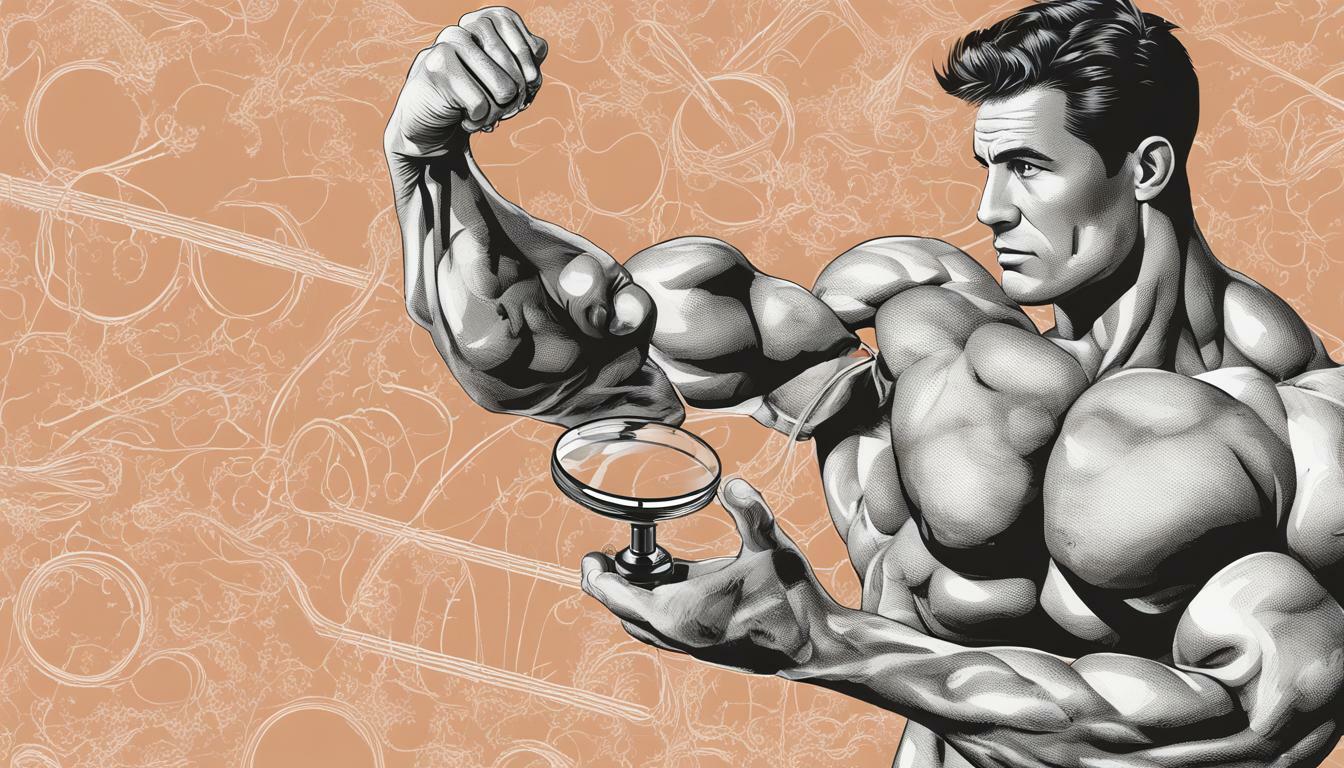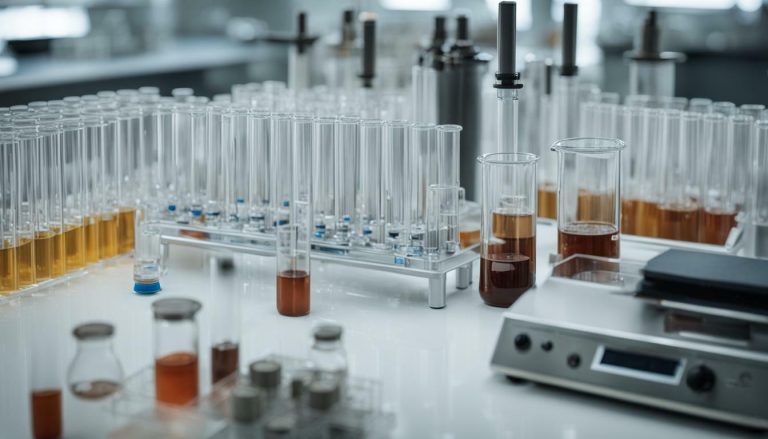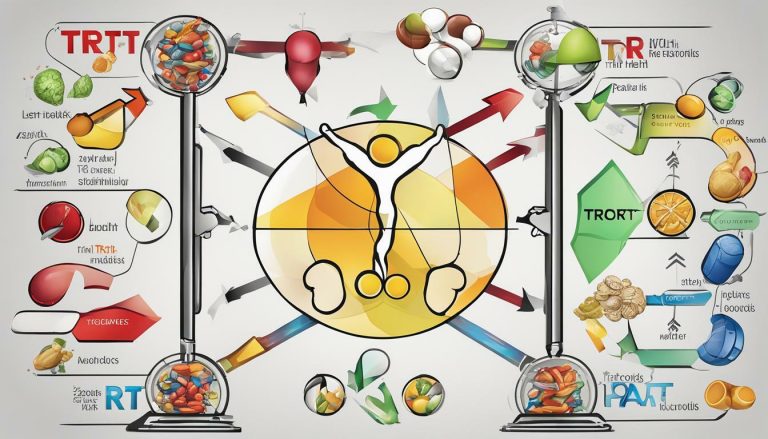Decoding the Signs: How to Tell if Someone is On Steroids
If you suspect that someone you know is using steroids, it’s important to recognize the signs. While steroid use can have physical and behavioral effects on the user, it can also have serious health consequences. In this article, we will explore the different signs that can help identify if someone is using steroids, the physical and behavioral changes that may occur, the potential side effects, and how to detect it.
Key Takeaways:
- Recognizing the signs of steroid use is important to help prevent serious health consequences.
- Physical changes, such as increased muscle size, acne, and unusual hair growth patterns, can indicate steroid use.
- Behavioral changes, like changes in mood, aggression, and increased irritability, can also be potential indicators of steroid use.
- The potential side effects of steroid use can include issues related to cardiovascular health, liver function, and hormonal imbalances.
- Various methods, such as drug tests and physical examinations, can be used to detect steroid use.
- Understanding the common signs of steroid use can help identify if someone is using it.
Physical Signs of Steroid Use
Steroid use can lead to a range of physical changes that can be detected through careful observation. Some of the most common physical signs of steroid use include:
- Increased muscle size and definition beyond what would be expected from natural exercise
- Unusual hair growth patterns, such as excess growth on the face or body, or hair loss on the scalp
- Severe acne, particularly on the chest, back, and face
- Fluid retention and bloating, resulting in a puffy or swollen appearance
- Stretch marks on the skin, particularly in areas where muscle growth has occurred rapidly
- Enlarged breasts in men, known as gynecomastia
- Changes in skin tone, such as becoming more oily or appearing darker in color
It is important to note that some of these physical changes may be the result of other factors, such as hormonal imbalances or natural aging. However, when combined with other indicators, they can be a strong signal of steroid use.
Spotting Steroid Use
In some instances, physical signs of steroid use may be subtle or difficult to detect. However, there are some key factors to look out for:
- Sudden or rapid gains in muscle size and strength, particularly beyond what would be expected from natural exercise and diet
- Changes in body shape, such as a more muscular upper body and disproportionately smaller legs
- Signs of injection marks or scarring on the body
- Unusual or extreme fluctuations in weight
- Unusual or extreme changes in appetite and dietary habits
By paying close attention to these physical signs, along with any behavioral indicators, it may be possible to identify steroid use in individuals who are otherwise trying to keep it hidden.
Physical Changes from Steroid Use
The physical changes that can result from steroid use are not always immediately apparent and may take some time to manifest. Some of the most common physical changes that can occur from steroid use include:
| Change | Effect |
|---|---|
| Increased muscle mass | Steroids stimulate the growth of skeletal muscle tissue, leading to increased muscle size and strength. |
| Changes in bone structure | Steroids can cause changes in bone structure, particularly in the face and skull. |
| Fluid retention | Steroids can cause water retention, leading to bloating and a puffy appearance. |
| Acne | Steroids can cause an increase in oil production in the skin, leading to severe outbreaks of acne. |
| Hair loss | Steroids can cause hair loss on the scalp, as well as excess hair growth on the face and body. |
It is important to note that the physical changes that can occur from steroid use can also have serious health consequences. These side effects will be discussed in detail in the next section.
Behavioral Signs of Steroid Use
While physical changes are the most obvious indicators of steroid use, there are also many behavioral signs that may suggest someone is using steroids. These changes in behavior could include:
- Increased irritability and mood swings
- Aggression and hostility
- Decreased patience and tolerance for others
- Paranoia and anxiety
- Elevated levels of confidence and self-esteem
These behavioral changes can be difficult to identify, as some of them can also be linked to other factors such as stress or mental health issues. However, when combined with physical changes, they can help create a clearer picture of steroid use.
It is also worth noting that not all individuals who use steroids will exhibit these behaviors. However, if you notice any significant changes in an individual’s mood or behavior, it may be worth investigating further to determine if steroid use is a factor.
“It is important to keep in mind that identifying steroid use is not about shaming individuals, but rather about helping them get the support they need to address any potential health risks and make healthier choices.”
Identifying Steroid Users
It can be challenging to identify individuals who are using steroids, as they may be hesitant to discuss their use or attempt to hide it. However, if you suspect someone is using steroids, there are several steps you can take to identify them:
- Observe any significant changes in the individual’s physical appearance and behavior.
- Ask the individual if they are using steroids, but do so in a supportive and non-judgmental manner.
- Consider seeking the help of a qualified healthcare professional or counselor who can assist in identifying potential signs of steroid use.
- Utilize drug testing methods to confirm suspicions of steroid use.
It is important to keep in mind that identifying steroid use is not about shaming individuals, but rather about helping them get the support they need to address any potential health risks and make healthier choices. If you suspect someone you know is using steroids, encourage them to seek professional help and support them in making positive changes.
Side Effects of Steroid Use
Steroid use can have a number of side effects that can be both short-term and long-term. These side effects are not only limited to physical changes, but can also manifest as psychological and emotional changes.
Physical Side Effects
One of the most noticeable physical side effects of steroid use is an increase in muscle size. This is often accompanied by a decrease in body fat, giving the body a more defined and muscular appearance. However, excessive use of steroids can lead to a number of negative side effects, such as:
| Physical Side Effects | Details |
|---|---|
| Acne | Steroid use can lead to an increase in acne due to the overstimulation of sebaceous glands in the skin, which can cause clogging and inflammation. |
| Hair loss/growth | Steroids can affect hair growth, causing unusual hair patterns or, in some cases, hair loss due to hormonal imbalances. |
| Fluid retention | Steroids can cause the body to retain excess fluids, leading to bloating and swelling in various body parts. |
| Cardiovascular issues | Steroids can lead to heart problems such as hypertension, heart attacks, and strokes due to an increase in cholesterol levels. |
| Liver damage | Steroids can damage the liver, especially when taken in high doses or for extended periods of time. |
| Hormonal imbalances | Steroids can cause a disruption in the body’s natural hormonal balance, leading to a range of physical and psychological side effects. |
Psychological Side Effects
In addition to the physical side effects, steroid use can also lead to psychological and emotional changes. These can include:
- Mood swings
- Aggression and irritability
- Depression
- Anxiety
- Paranoia
- Mania
It’s important to note that these side effects can vary depending on each individual’s response to steroid use and may not necessarily be present in every case.
How to Detect Steroid Use
If you suspect someone is taking steroids, it is important to know how to detect it. Below are some common methods used to identify steroid use:
Drug Tests
One of the most common ways to detect steroid use is through drug tests. These tests can detect the presence of steroids in the body, indicating recent use. However, it is important to note that not all drug tests can detect all types of steroids, so it may be necessary to use multiple tests.
Physical Examinations
Physical examinations can also be used to detect signs of steroid use. Doctors may look for specific physical changes, such as acne, unusual hair growth patterns, and increased muscle size, as well as signs of injection marks.
Behavioral Changes
Along with physical changes, steroid use can also lead to behavioral changes. These may include increased aggression, mood swings, and irritability. If you notice sudden changes in a person’s behavior, it may be a sign that they are using steroids.
If you suspect someone is using steroids, it is important to approach the situation with care and sensitivity. Steroid use can have serious health consequences, and it is important to encourage the person to seek help. Consider speaking to a doctor or other medical professional for advice on how to proceed.
Common Signs of Steroid Use
Recognizing the physical and behavioural changes associated with steroid use can help identify those who might be using them. Here are some of the most common signs:
| Physical Signs | Behavioural Signs |
|---|---|
|
|
It’s important to note that not everyone who displays these signs is necessarily using steroids. Some may be natural bodybuilders or have genetic predispositions to certain physical features. However, if multiple signs are present, it may be worth investigating further.
Conclusion
It’s essential to recognize the signs of steroid use, as there may be potentially severe health consequences associated with their abuse. In this article, we have explored the physical and behavioral signs that may indicate someone is using steroids. We have also discussed the potential side effects that come from steroid use, as well as the different methods for detecting steroid use.
If you suspect someone you know is using steroids, it’s important to approach them with empathy and encourage them to seek professional help. Steroid use can have severe physical and emotional consequences, and it’s essential to provide support and guidance to those affected.






